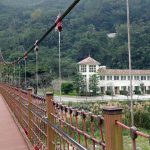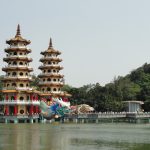加瀬英明著・KKベストセラーズ社刊
今回は、第七章です。
著者は特攻隊につい手の造詣が深く、アメリカの戦史作家のアルバート・アクセルと共著で Kamikaze Japan’s Suicide Gods (神風・日本の特攻神)をイギリス最大の出版社であるロングマン社から出版しています。この本はアメリカでもよく売れ、スペイン語・デンマーク語、フィンランド語、エストニア語にも翻訳されて出版されています。発信する会の会員の方で貿易会社をされている斎藤征人さんという方が、エストニアに行った時に偶然古本屋のショーウインドウに並んでいたので買ってきた、といってエストニア語版をみせてくださったことがあります。
この本には多くの感動的な話が掲載されています。関係者のインタビューをはじめ、提供を受けた資料、手紙、写真などに基づくものです。
沖縄戦には海軍が1005機、陸軍が880機の特攻機を出撃させ、それぞれ1986人と1021人が戦死しています。アメリカ海軍の戦死者は5000人に登りましたが、その殆どは特攻機によるものでした。
モーリス・パンゲ元パリ大学教授は名著『自死の日本史』(講談社学術文庫)
の中で特攻に殉じた青年たちを賞賛しています。
「彼らの自己犠牲には悲観も遺恨もない、それだけに、一層人の心を打つ。自分たちがいま到達した地点に立って、自分たちに与えられた短い人生を振り返る時、彼らが感じるのは感謝の気持ちだ。」
「人の心を打つのは、むしろ彼らの叡智、彼らの冷静、彼らの明晰なのだ。震えるばかりに繊細な心を持ち、時代の不幸を敏感に感じ取るあまり、己の命さえ捨てて顧みないこの青年たちのことを頭のおかしい人間というのでなければ、せいぜい良くて人の言いなりになるロボットだと我々は考えてきた。彼らにとっては単純明快で自発的な行為であったものが、不可解な行為に見えたのだ。
強制、誘導、報酬、妄想、洗脳、というような理由付けを我々は行った。しかし、無と同じ程に透明であるがゆえに人の目には見えない、水晶の如き自己放棄の精神をそこに見るべきであったのだ。」
日本文は、http://hassin.org/01/wp-content/uploads/Greater77.pdf
英文は、http://www.sdh-fact.com/CL/Greater7.pdf
英文は、下記の通り、英文Newsletter で海外に発信しました。
平成28年4月4日 「史実を世界に発信する会」茂木弘道拝
The Greater East Asian War: How Japan Changed The World
By Kase Hideaki
(Published by KK Bestseller in Japanese, 2015)
Chapter 7 – Why Do We Praise The Kamikaze?
This link is to Chapter 7.
Mr. Kase wrote a book Kamikaze: Japan’s Suicide Gods in English and had it published through Longman, the United Kingdom’s largest publishing firm. The book was co-authored with Mr. Albert Axell, famous American military history writer.
The book sold well in the United States, and was subsequently translated into Spanish, Danish, Finnish, and Estonian.
During the battle of Okinawa, the Japanese Navy sent 1,005 planes and the Japanese Army sent 886 planes on kamikaze missions. 1,986 members of the Navy and 1,201 members of the Army were killed during these missions. The US Navy lost 5,000 servicemen, most of whom were killed in kamikaze attacks.
Maurice Pinguet was a French philosopher. He was a professor at the University of Paris, and then, by invitation, at the University of Tokyo. In his book, Voluntary Death in Japan, Pinguet praises the young Japanese pilots who perished in kamikaze attacks:
“Their sacrifice was all the more poignant for being devoid of pessimism and bitterness. When they looked back on the brief time which had been allowed them, they were grateful for it… Pilot Officer Nagatsuka had the gentle, but now for ever unrealizable, ambition of reading the whole of George Sand’s The Master Bell Ringers. He thought of his mother and sisters, who must be protected from invasion. A good son, a good student, a good soldier, the young pilot of the Special Units was martyr less to his faith than to his good will. He was no daredevil and no boaster: he was serious, industrious… But what reaches us [about the kamikaze pilots] is their sense, their calm, their lucidity. From the outside they looked like raving madmen, or robots, those eager hearts too aware of the ills of their time to cling to their own lives. No one could understand what they were doing, but for them it was simple and spontaneous. People believed they were forced, inveigled, brainwashed, !
fed on promises, illusions and drugs; people’s eyes went through the crystal clarity of their self-denial, so clear it was impossible to perceive. It is this purity which is so unbearably moving. These young men, learning to die well at an age when life might have been so fair, were misunderstood. It is for us to give them the tribute of admiration and compassion which they deserve. They died for Japan, but we do not need to be Japanese to understand them.”
URL: http://www.sdh-fact.com/book-article/663/
PDF: http://www.sdh-fact.com/CL/Greater7.pdf
Author profile: http://www.sdh-fact.com/auther/kase-hideaki/
*For your reference; Chapter 1. Up to the Day Japan Surrendered
http://www.sdh-fact.com/CL/The-Greater1.pdf
Chapter 2. The Trap Laid by the United States
http://www.sdh-fact.com/CL/Greater2.pdf
Chapter 3. The Greater East Asia Conference and the Dream of Racial Equality
http://www.sdh-fact.com/CL/Greater3.pdf
Chapter 4. The Noble Spirit Which Inspired the People of Asia
http://www.sdh-fact.com/CL/Greater4.pdf
Chapter 5. Freedom From Racial Discrimination
http://www.sdh-fact.com/CL/Greater5.pdf
Chapter 6. Japanese Army’s “Spirit-First Policy”
http://www.sdh-fact.com/CL/Greater6.pdf
Questions are welcome.
MOTEKI Hiromichi, Acting Chairman
for KASE Hideaki, Chairman
Society for the Dissemination of Historical Fact
Phone: +81-3-3519-4366
Fax: +81-3-3519-4367
Email moteki@sdh-fact.com
URL http://www.sdh-fact.com
Note: Japanese names are rendered surname first in accordance with Japanese custom.





